On 15th April, the Interreg Circular Trust Building (CTB) project, held a masterclass led by SURA on digital Trust Frameworks and why they matter for circular construction.
SURA – a new Flemish partner in CTB - provides sustainability advice, circular business model support, and training. The session showcased how trust frameworks enable secure collaboration and data sharing, and why this is important for CTB initiatives.
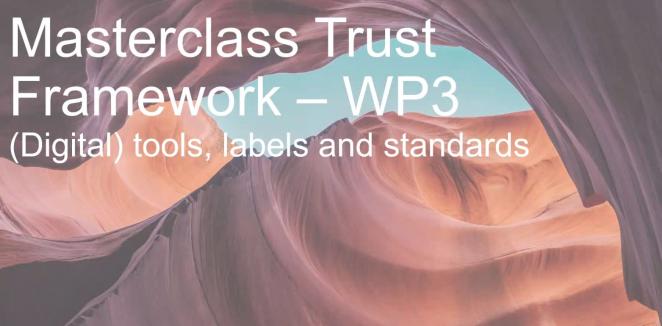
Enabling secure collaboration
A trust framework is a set of shared rules and standards that lets organizations collaborate and share data safely. Such frameworks are already used elsewhere as Tine Buysens (SURA), who introduced the concept, explained: “Open Banking in finance uses a trust framework so banks and fintechs can exchange data securely and the energy sector is adopting a similar model for sharing smart meter data.
By establishing common protocols, a trust framework ensures all participants follow the same standards, removing the need to set up separate data agreements each time. In essence, technical and legal aspects are connected with user needs in one system. This means everyone can trust that data is handled consistently and safely.”
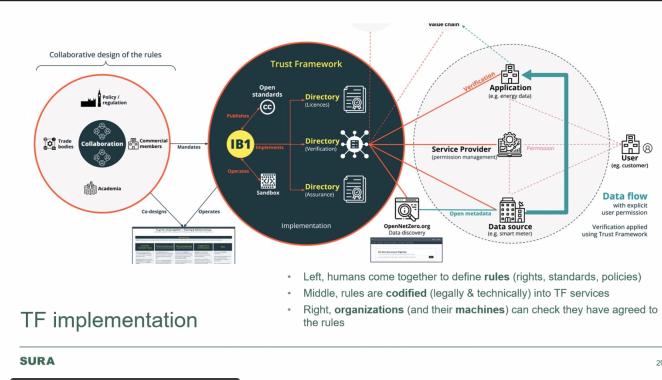
Trust Framework for circular construction
Bringing this concept into circular construction is a key goal for CTB. The idea is to allow architects, builders, suppliers, and demolition firms to share information (e.g. about materials or building components) under unified guidelines. Tine shared five key pillars for designing such a framework:
- Purpose & user needs: Clear purpose and real user value.
- Technical infrastructure: Digital tools and data standards for sharing (e.g. material passports, BIM).
- Legal & data licensing: Standard legal terms and data licenses for all participants, reducing separate contracts.
- Engagement & communication: Involve stakeholders and communicate benefits to drive adoption.
- Policy & regulation: Align with existing policies and nationl/EU regulations (and inform future ones) to ensure support.
These pillars can ensure the framework covers all critical areas and remains practical for the industry’s needs.
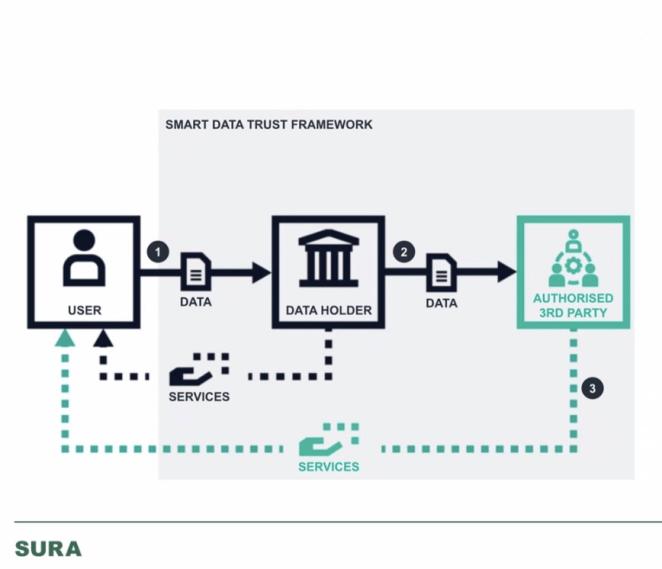
Interactive discussions
The online CTB masterclass also included two breakout sessions in which smaller groups exchanged thoughts and explored real-life scenarios to test these ideas. One use case was circular demolition – how to share data on reusable materials from building demolitions among owners, contractors, and reuse companies. Another was sustainable sourcing of materials, examining how to exchange data on a product’s life journey and recycled content between suppliers and builders.
In both cases a trust framework shows clear value. For example, by enabling pre-demolition audits and material passports to be shared confidently among all parties.
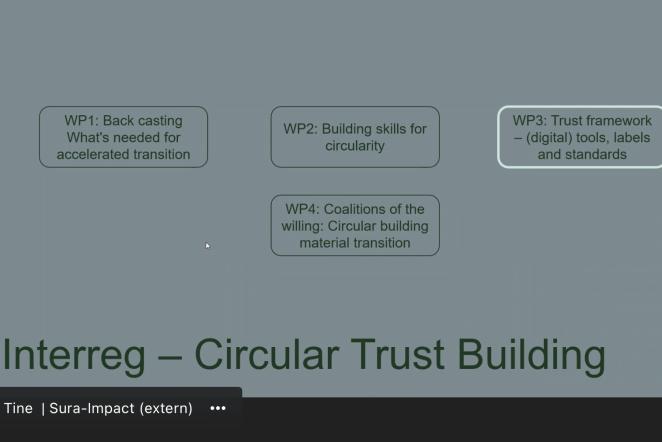
More insights
Importantly, the same success factors emerged in each scenario, reflecting once again the five pillars previously presented by Tine and underlining the need for shared data standards, clear agreements on data use, and strong stakeholder engagement. This confirmed that a succesful framework is not just about technology, but also about establishing mutual trust and clear rules across the board.
Clear scoping is vital to make things tangible. The circular economy involves many actors but which use cases can generate economic growth by aligning public support with private sector innovation?
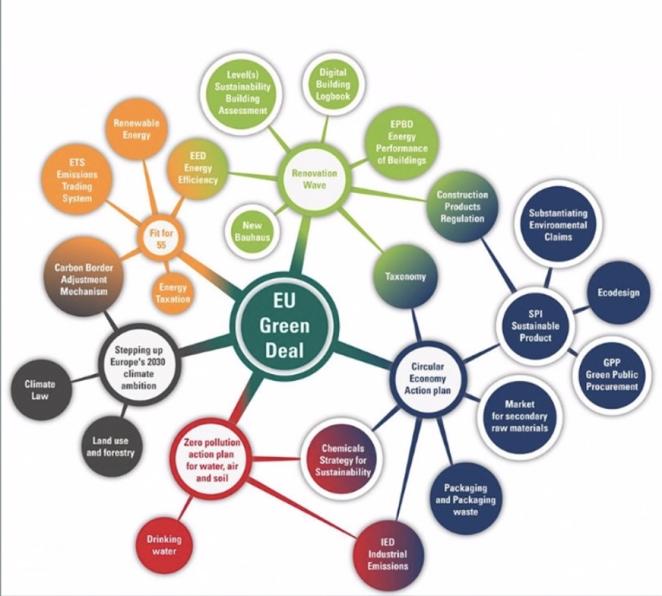
Designing the CTB framework
During the wrap up, founder Sofie Rapsaet assured the other CTB partners that SURA will spearhead the co-development of this framework within CTB. Their expertise and experience in crafting trusted frameworks for the built environment means SURA is well positioned to guide the process. They will work with CTB partners to refine the framework’s design and pilot it in real projects.
The consortium plans to take the next steps in a follow-up session during the upcoming partner meeting in Bremerhaven.
